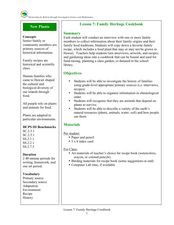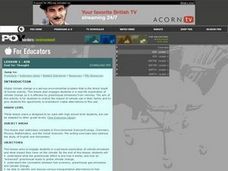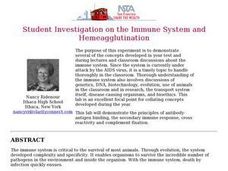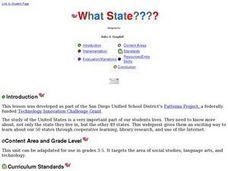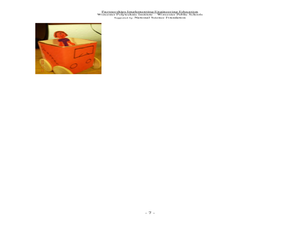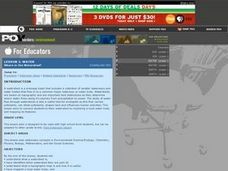Curated OER
City Animals
Young scholars identify some of the most important native and introduced species of animals in the United States. They describe how animals populations of cities have changed over time, outline the benefits and problems associated with...
Curated OER
Climate Change
Students discuss global warming. In this global warming lesson, students read an article about global warming and list five things they learned. Students work in small groups to compare what they wrote. Students illustrate one of the...
Curated OER
Family Heritage Cookbook
Learners compare favorite family recipes. In this cultural diversity lesson, students interview family members and record favorite recipes. Learners examine cultural diversity through favorite foods.
Curated OER
Air: Fuel For Thought
Students consider the impact of vehicle use in their family and brainstorm viable alternatives to this use. They calculate the total emissions for their family cars during the week, then compare those totals with Hybrid car totals.
Curated OER
Student Investigation on the Immune System and Hemeagglutination
Students perform an experiment to demonstrate the principles of antibody-antigen binding, the secondary immune response, cross reactivity, and complement fixation. The materials to be used include antibodies from a rabbit that was...
Curated OER
Eutrophication Lab
Middle schoolers examine the effects of detergents and fertilizers on aquatic life and describe algae. Students define the term eutrophication as the process by which a body of water, such as a pond, lake, stream, or river, has a sudden...
Curated OER
Describe My City
Students explore the functions of cities by creating a visual image of their own neighborhood. Students diagram, list, and label the major businesses and cultural areas of the neighborhood where they grew up, then write a letter to a...
Curated OER
What State????
Students study the United States. They research not only the state they live in, but the other 49 states. This webquest gives them an exciting way to study about our 50 states through cooperative learning, library research, and use of...
Curated OER
Hatching Chickens
Students observe chicks hatching from eggs. In this science lesson plan, students view a video to develop an understanding of the proper care and needs of eggs and live animals. This is a great precursor activity for hatching eggs in class.
Curated OER
Building a Car: Mechanical Engineering
Students use common materials to build a car. In this car building mechanical engineering lesson, students build a car using a milk cartoon and plastic wheels. They discuss what mechanical engineers do and what makes a car run.
Curated OER
What Kind of Santa Claus You Are.
Students use a photograph analysis sheet to analyze primary sources (photographs) of the Great Depression in small groups. They then write a poem about kids in the Depression Era that reflects their comprehension of the period and its...
Curated OER
Water, Water Everywhere
Students are introduced to the complex issues of water resources around the globe. In groups, they take on the role of a country and map out the location of water sources. They barter, sell or take over other groups to have access to...
Curated OER
MAKING CONNECTIONS WITH MAPS
Students define choropleth map. They construct a choropleth map. They interpret a choropleth map. They present geographic information.
Curated OER
Water: Where in the Watershed?
Students become connected to their watershed by exploring a local water body and mapping its features. They focus on how the local watershed fits into the larger scheme of the watershed.
Curated OER
LAND USE ISSUES
Learners relate math with real life situations. They identify and plot points on a grid map. They identify and locate the Drop Box Sites.
Curated OER
How Many Penguins Does It Take? Studying Carrying Capacity and Limiting Factors
How does a population's habitat determine the size of that population? Teach learners about carrying capacity and limiting factors with an engaging roleplay activity. Class members pose as a colony of penguins who must gather food amidst...
Curated OER
Healthy Water!?
Students test water for its quality and record their information.In this water quality lesson, students investigate water for pH, macro invertebrates and identify its characteristics. Students complete worksheets on their data for their...
Curated OER
Food for Thought
Fifth graders explore the brain and what is needs. In this biology lesson plan, 5th graders will work on a series of activities that will allow them to learn about the brain, its parts, and the best foods to eat for their brain.
Curated OER
Coral Reef Conservation
Students conduct discussions on current threats to coral reefs around the world and write letters to conservation organizations urging support for coral reef protection.
Curated OER
Animal Adaptations
Students expand their knowledge of animal features and behaviors that can help or hinder their survival in a particular habitat. They participate in classroom discussions and visit a website to research animals
Curated OER
Four Corners Mystery: Where In The World Are We?
Students research and describe various locations around the world using five fundamental themes of geography.
Curated OER
Art in the Middle Ages and Today
Students create a contemporary coat of arms and illuminated page. They study contemporary artists who combine text, symbols and images in altered books and create an altered book page of their own.
Curated OER
Canada: A Land Rich in Beauty and Culture
Third graders in groups research the different regions of Canada. They create a timeline to put the major events of Canada's history in order.
Curated OER
Government Lesson Plan - Number 14
Students analyze data on air pollution in Maryland. They evaluate the effectiveness of government actions to improve air quality. Each group recommends actions that would improve air quality on the federal, state and local level.




